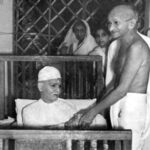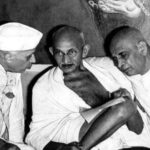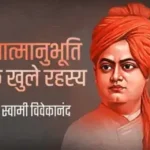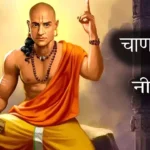Chaitanya Mahaprabhu was a revered saint, social reformer, and a key proponent of the Vaishnav Bhakti movement in India. Born in the 16th century, he emphasized devotion (bhakti) as the highest path to spirituality. Deeply immersed in Krishna consciousness, he propagated Harinaam Sankirtan—the chanting of the Lord’s name—as the supreme means of attaining spiritual liberation. His life was a testament to love, compassion, and unwavering devotion.
Early Life of Chaitanya Mahaprabhu
Chaitanya Mahaprabhu was born in 1486 in Navadvipa, Bengal. His childhood name was Nimai, and he exhibited extraordinary intelligence from an early age. He quickly mastered scriptures and became a renowned scholar. His parents, Jagannath Mishra and Sachi Devi, were devout Hindus.
Spiritual Awakening and Sankirtan Movement
Chaitanya Mahaprabhu abandoned his scholarly pursuits and embraced the path of devotion. He initiated the Sankirtan movement, promoting collective chanting of God’s names. He believed that the chanting of the holy names purified the heart and led to divine realization. He famously propagated:
“Hare Krishna, Hare Krishna, Krishna Krishna, Hare Hare.
Hare Rama, Hare Rama, Rama Rama, Hare Hare.”
His movement emphasized universal brotherhood and rejected caste-based discrimination. He welcomed people from all backgrounds into the fold of devotion, empowering the marginalized sections of society.
Association with Great Devotees
Chaitanya Mahaprabhu surrounded himself with devout followers, including Nityananda Prabhu, Advaita Acharya, and Haridas Thakur. Notably, Haridas Thakur was a Muslim by birth, yet Chaitanya Mahaprabhu honored him as Nama Acharya (the teacher of chanting). This act showcased his rejection of religious and caste-based barriers.
Sannyasa and Pilgrimage
In 1510, Chaitanya Mahaprabhu renounced worldly life and took sannyasa (monastic vows). He traveled extensively across India, spreading the message of devotion. His spiritual influence was so profound that even King Prataparudra of Odisha became his disciple.
Participation in Jagannath Rath Yatra
Chaitanya Mahaprabhu’s life was deeply connected with the grand Jagannath Rath Yatra (Chariot Festival). Every year, he participated in the festival, immersing himself in ecstatic devotional dancing and chanting. Devotees who witnessed his divine state during these celebrations were deeply moved.
Teachings and Legacy
Chaitanya Mahaprabhu’s teachings emphasized love, compassion, and devotion. His core messages included:
- Harinaam Sankirtan: Chanting the holy names purifies the soul and leads to liberation.
- God Resides in All: Every living being contains the divine presence, so one should treat all with love and respect.
- Rejection of Casteism: Devotion is open to all, regardless of caste or background.
- Importance of a Guru: A spiritual teacher is essential for enlightenment.
Chaitanya Mahaprabhu’s Departure
In 1534, Chaitanya Mahaprabhu entered Goloka Dham (spiritual abode) in Jagannath Puri. His followers continued to spread his teachings, giving rise to the Gaudiya Vaishnavism tradition, which remains influential worldwide.
Conclusion
The life and teachings of Chaitanya Mahaprabhu remain relevant even today. His Sankirtan movement continues to bring spiritual solace to millions across the globe. By advocating love, devotion, and inclusivity, he paved the way for a more compassionate and spiritually enriched society.
If you seek spiritual growth, embrace the teachings of Chaitanya Mahaprabhu and immerse yourself in the chanting of the divine name!
Related posts:
 Bhakti Yoga: The Path of Devotion and Divine Love
Bhakti Yoga: The Path of Devotion and Divine Love
 Which Techniques Was Better Udarvadi (Moderate) and Krantikari (Revolutionary) For Indian Independence Movement?
Which Techniques Was Better Udarvadi (Moderate) and Krantikari (Revolutionary) For Indian Independence Movement?
 What Was The Role Of Jawaharlal Nehru In Indian Independence Movement?
What Was The Role Of Jawaharlal Nehru In Indian Independence Movement?
 Unlocking the Secrets of Self-Realization: Insights from Swami Vivekananda’s ‘Atmanubhuti Ke Khule Rahasya
Unlocking the Secrets of Self-Realization: Insights from Swami Vivekananda’s ‘Atmanubhuti Ke Khule Rahasya
 Chanakya Neeti: Timeless Wisdom for Modern Life
Chanakya Neeti: Timeless Wisdom for Modern Life
 Why Late Middle Age is So Important: A Transformative Phase of Life
Why Late Middle Age is So Important: A Transformative Phase of Life
